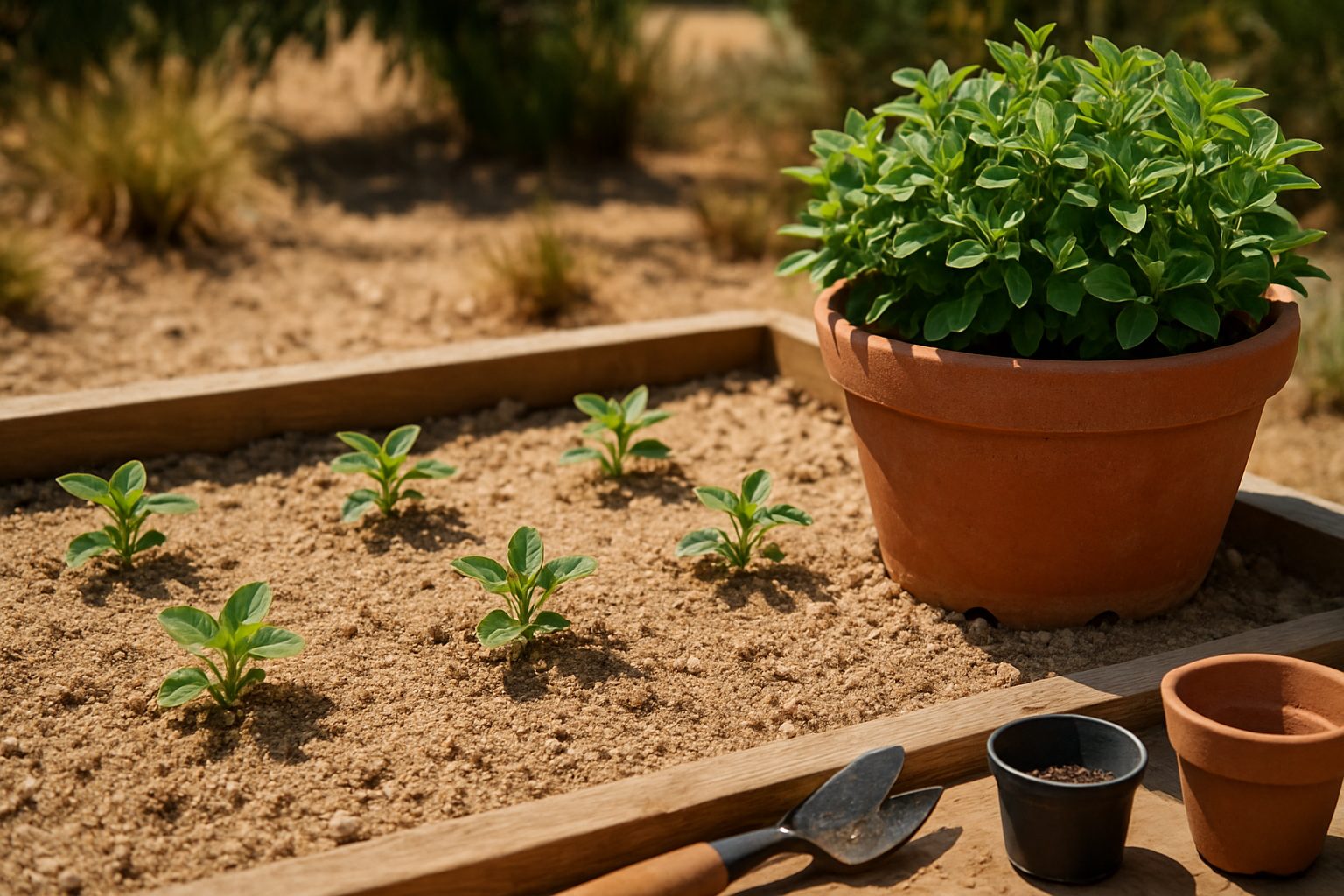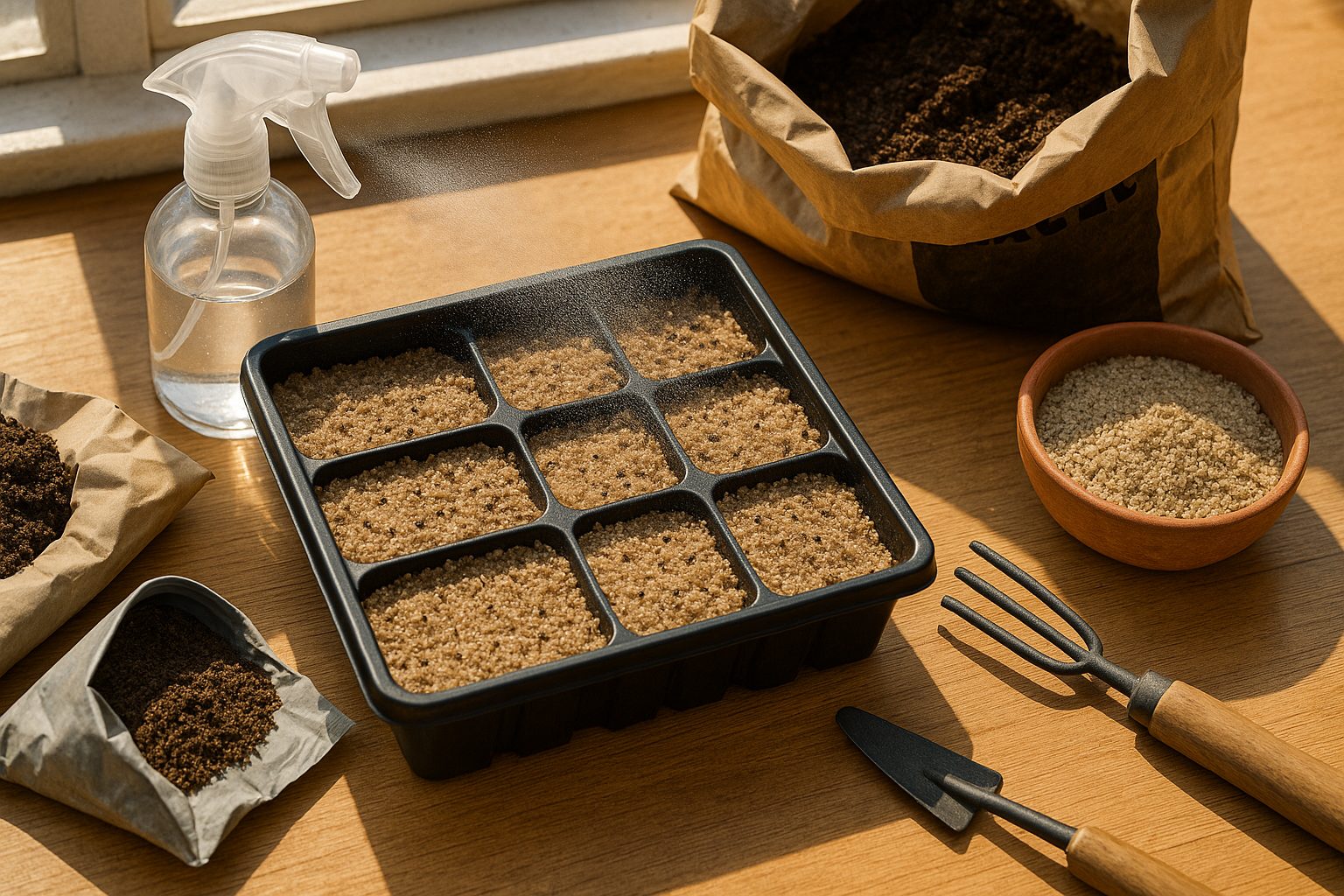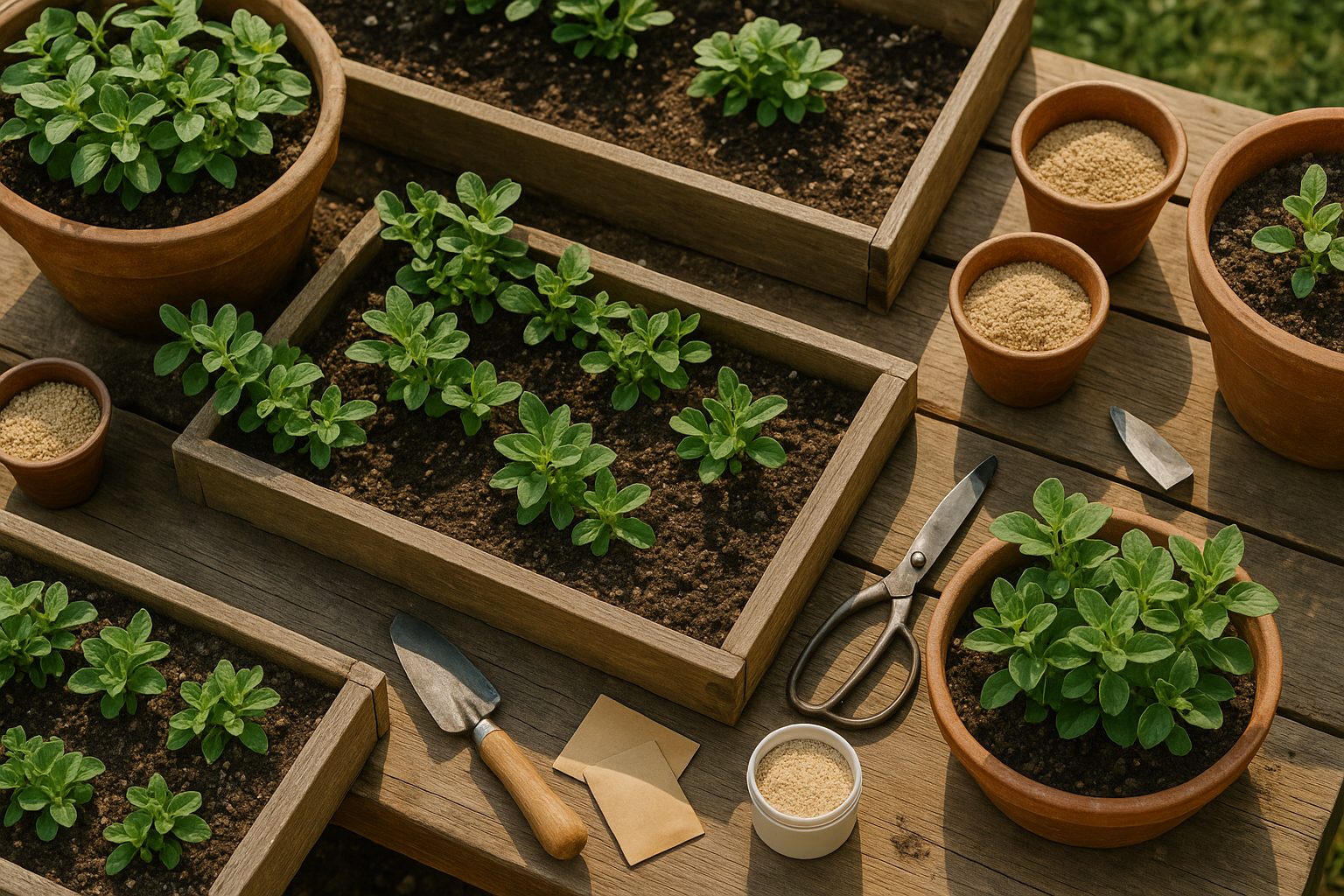Choosing the Right Oregano Variety and Location

Picking the best soil for Mexican oregano is the first step toward a vibrant, fragrant herb garden. Unlike its Mediterranean cousin, which is common in Italian dishes, Mexican oregano (Lippia graveolens) boasts a bolder, citrusy flavor and thrives in distinctly different conditions.
While Mediterranean oregano prefers cooler climates and milder sun, Mexican oregano loves warmth and full, direct sunlight—think at least 6-8 hours per day. Consider your location: if you live somewhere hot and dry, Mexican oregano will flourish; in cooler or wetter climates, it may struggle without extra protection.
When choosing your garden spot, look for well-draining soil—sandy or loamy beds are ideal. If your native soil retains too much water, consider planting in raised beds or large containers so you can control the soil mix. A container with drainage holes not only prevents root rot but also makes it easier to bring your oregano indoors during cold snaps.
Whether outdoors in the ground or in a pot on your patio, make sure your oregano gets maximum sunlight and avoid overly rich soils, which can dilute flavor. Picking the right spot and soil type will set your Mexican oregano up for a healthy, flavorful future.
Soil Preparation and Planting Techniques

To give your oregano the best start, focus on soil that drains well, as soggy soil quickly leads to root rot. Aim for a slightly alkaline to neutral pH, ideally between 6.5 and 7.0. Amend heavier clay soils with compost or coarse sand to improve drainage and airflow around the roots. Mixing in aged compost or a balanced organic fertilizer also helps enrich the soil with essential nutrients.
If you’re starting oregano from seeds, sow them indoors about 6-10 weeks before your last frost date. Use a seed tray filled with a light, seed-starting mix, and lightly press the seeds onto the surface—don’t bury them, as oregano seeds need light to germinate. Mist gently and keep the tray in a warm, sunny spot or under grow lights; sprouting usually takes 7-14 days.
When seedlings have two sets of true leaves, transplant them outdoors after the danger of frost has passed, spacing each plant about 12 inches apart for good air circulation.
For direct sowing outdoors, wait until the soil has warmed up in spring. Then scatter seeds thinly and press them into the soil surface. Keep the area evenly moist until germination.
Oregano also grows well from cuttings: simply snip a healthy stem, strip the lower leaves, and set it in moist potting mix. Keep cuttings warm and shaded until they root, then transplant outdoors.
Whether starting from seed or cuttings, choose a sunny spot—oregano loves at least 6 hours of sunlight daily for strong, fragrant growth.
Watering, Fertilizing, and Ongoing Care
Oregano is a hardy herb that thrives on minimal care, making it perfect for busy gardeners. When watering, let the soil dry out between sessions—overwatering is a common mistake that can lead to root rot. Oregano’s drought tolerance means it prefers less frequent, deep watering rather than frequent light sprinkles; typically, once a week is enough unless it’s especially hot and dry.
Watch for leaves turning yellow and wilting, as these are signs you might be watering too much, while droopy, crispy leaves can signal it’s time to water again.
Fertilizing oregano isn’t usually necessary because this herb likes lean soil, but if your plants look pale or growth is stunted, feed them with a balanced, diluted liquid fertilizer once early in the growing season. Too much fertilizer can cause weak, flavorless leaves, so less is more.
For ongoing care, regular pruning is key to promoting bushier growth—pinch or snip back stems just above a leaf node every couple of weeks, especially once the plant is around four inches tall. Removing flower buds as they appear also helps divert energy into leaf production.
Mulching with straw or shredded leaves can help maintain even moisture and suppress weeds, but keep mulch a few inches away from the stems to prevent rot.
With the right touch, oregano will reward you with plentiful, aromatic harvests all season long.
Container Gardening vs. Outdoor Beds
Container gardening and traditional outdoor beds each offer unique advantages for home growers, but your choice will depend on your specific needs and circumstances. Containers are ideal for small spaces like balconies, patios, or rental properties where digging into the ground isn’t possible. They also allow you to move plants for optimal sunlight or to protect them from harsh weather—especially useful for overwintering tender perennials.
Outdoor beds, on the other hand, usually provide more room for plants to spread out and access deeper nutrients, resulting in potentially larger, healthier crops. However, they require more weeding and are more susceptible to certain pests.
If you opt for containers, choose ones large enough to accommodate root growth—at least 12 inches deep for most vegetables. Use a high-quality potting mix, not garden soil, to promote healthy drainage and prevent compacted roots that can lead to rot or stunted growth. Ensure containers have drainage holes, and consider adding a layer of gravel to the bottom. To avoid problems like root-bound plants, repot as needed and monitor soil moisture vigilantly; containers tend to dry out faster than garden beds.
Ultimately, containers are perfect when garden space is limited, you want flexibility, or need to bring plants indoors for seasonal protection.
Common Problems and How to Fix Them
Oregano is a hardy herb, but it’s not immune to a few common problems. Pests like aphids, spider mites, and leaf miners can cause yellow, damaged leaves. To tackle these, try spraying affected plants with a gentle mix of water and insecticidal soap, or release ladybugs to naturally control infestations.
Powdery mildew and root rot are other concerns, especially in humid conditions or heavy, soggy soil. Keep your oregano healthy by planting it in well-draining soil and watering only when the top inch feels dry.
If your oregano leaves are turning yellow, check for overwatering or poor drainage. Repotting in a sandy, well-aerated mix often helps.
Leggy, stretched growth usually means your plant isn’t getting enough sunlight. Move your pot to a sunnier spot or trim stems back to encourage bushier growth.
If the flavor seems weak, harvest oregano just before it flowers, and always use sharp scissors to prevent tearing the stems. Regularly pinch off the tips and remove any flower buds to promote leaf growth and boost essential oils.
Finally, rotating your crops each year and spacing plants for good airflow are simple organic steps to prevent most pests and diseases from gaining a foothold.
Harvesting, Preserving, and Using Oregano
To capture the best flavor from your oregano, harvest just before the plant begins to flower, usually in late spring or early summer—the leaves are richest in essential oils at this stage. Snip stems in the morning after the dew has dried but before the heat of the day.
For drying, bundle a handful of stems with kitchen twine and hang them upside down in a warm, dry, well-ventilated area out of direct sunlight. Alternatively, use a dehydrator for faster results. Once the leaves are brittle to the touch, strip them from the stems and store them in airtight containers away from light and heat to maintain potency for up to a year.
When cooking, add dried oregano early in sauces or soups to let its flavor infuse, or sprinkle fresh leaves over pizza, roasted vegetables, or salads for a burst of aroma.
Oregano isn’t just for the kitchen—it’s known for antimicrobial properties. You can steep dried leaves in hot water for a soothing herbal tea or create simple DIY cleaners by infusing oregano in vinegar. Fresh or preserved, oregano brings lasting versatility and vibrant flavor to both your meals and your home.
FAQs: Quick Answers for Oregano Growers
Oregano is a hardy herb that can survive most winters, especially if you mulch around the base and plant it in well-draining soil to prevent root rot. While oregano can live for several years—often up to five or more with proper care—it’s a good idea to divide older plants every few seasons to keep them vigorous.
If you’d like to grow more oregano, propagation is easy: simply snip a healthy stem about four inches long, remove the lower leaves, and place it in water or moist soil until roots develop.
Oregano thrives both in garden beds and pots, making it a flexible choice for all types of growers. Its resilience means you can enjoy fresh leaves year-round with minimal fuss, so don’t hesitate to add this adaptable herb to your collection!
